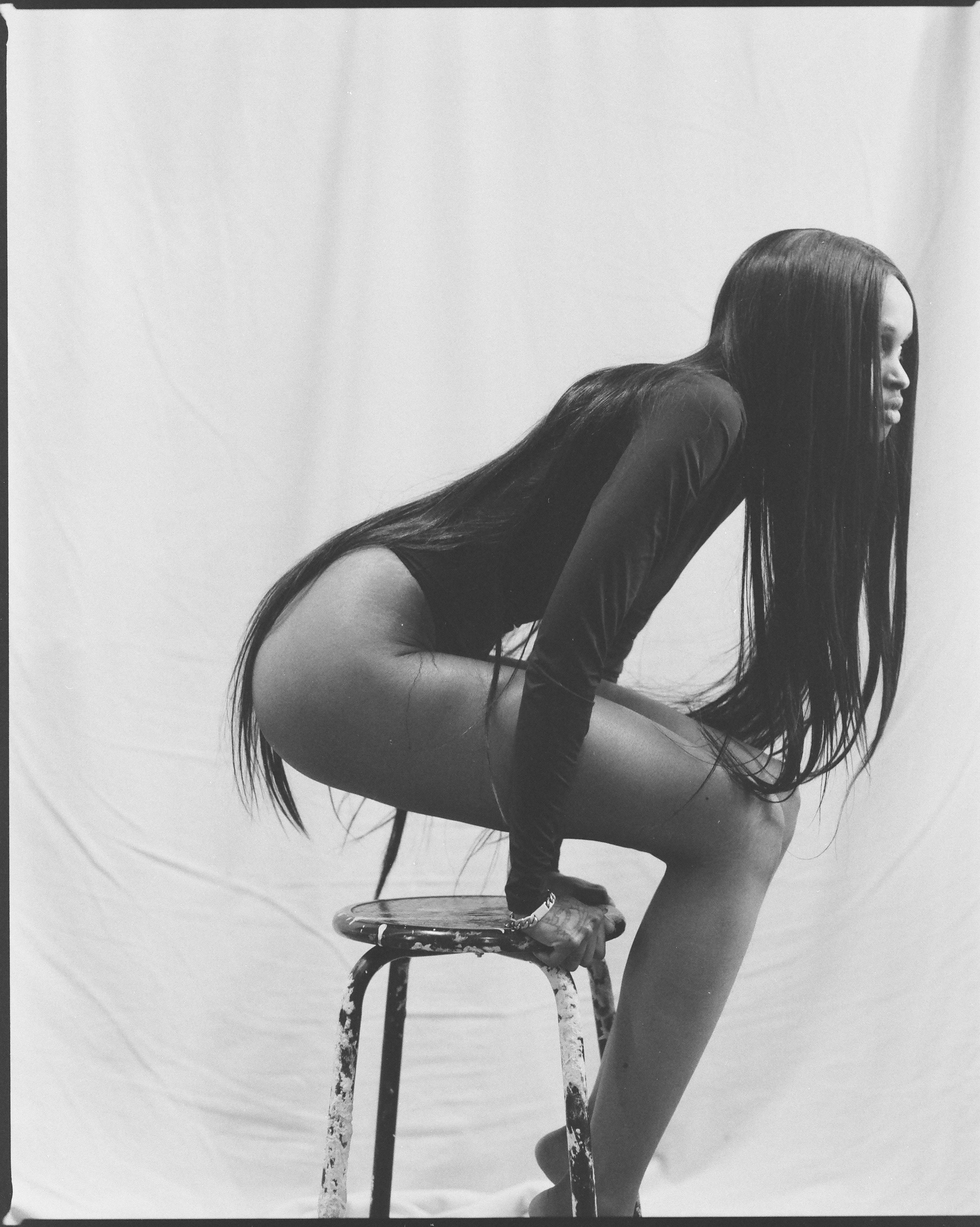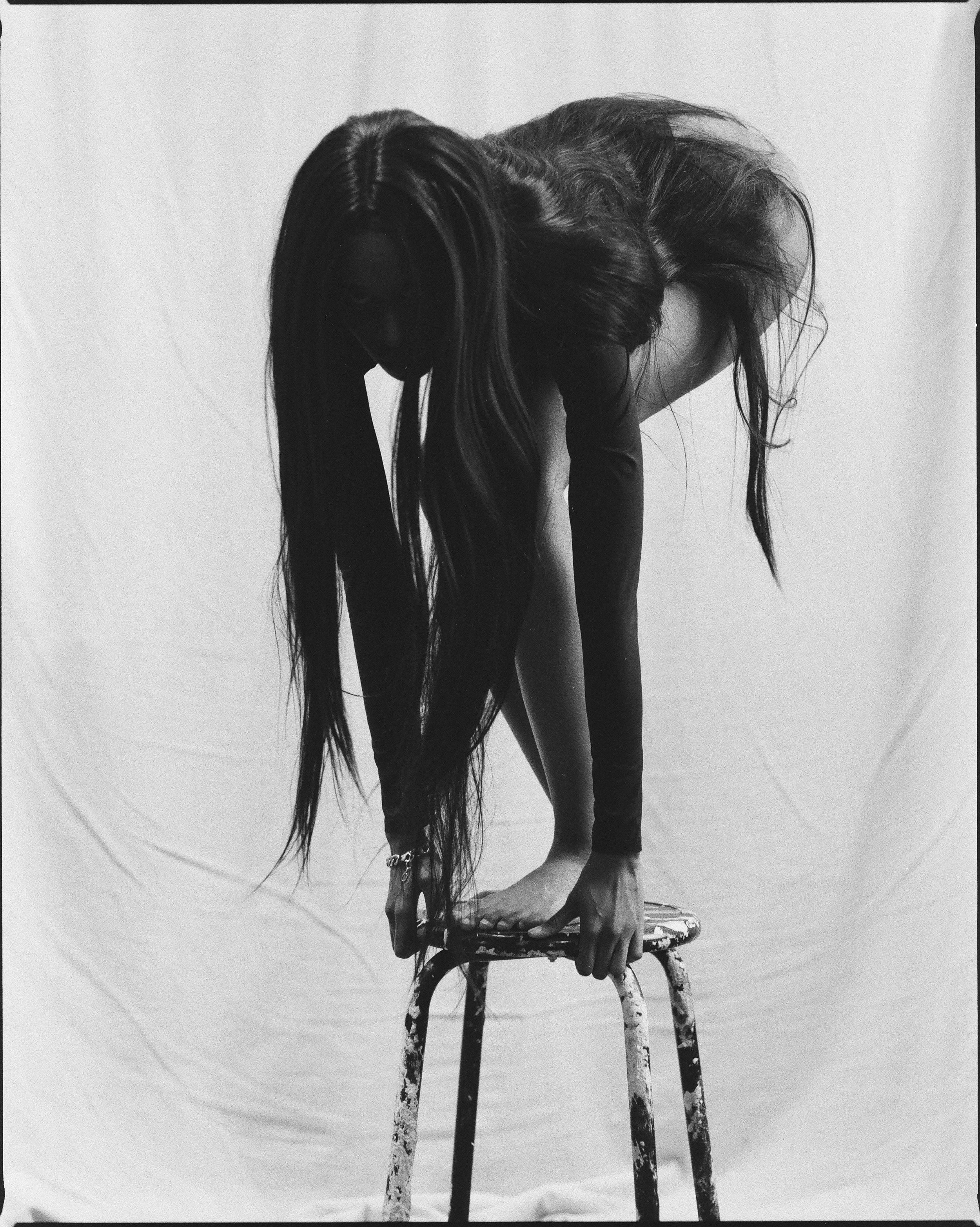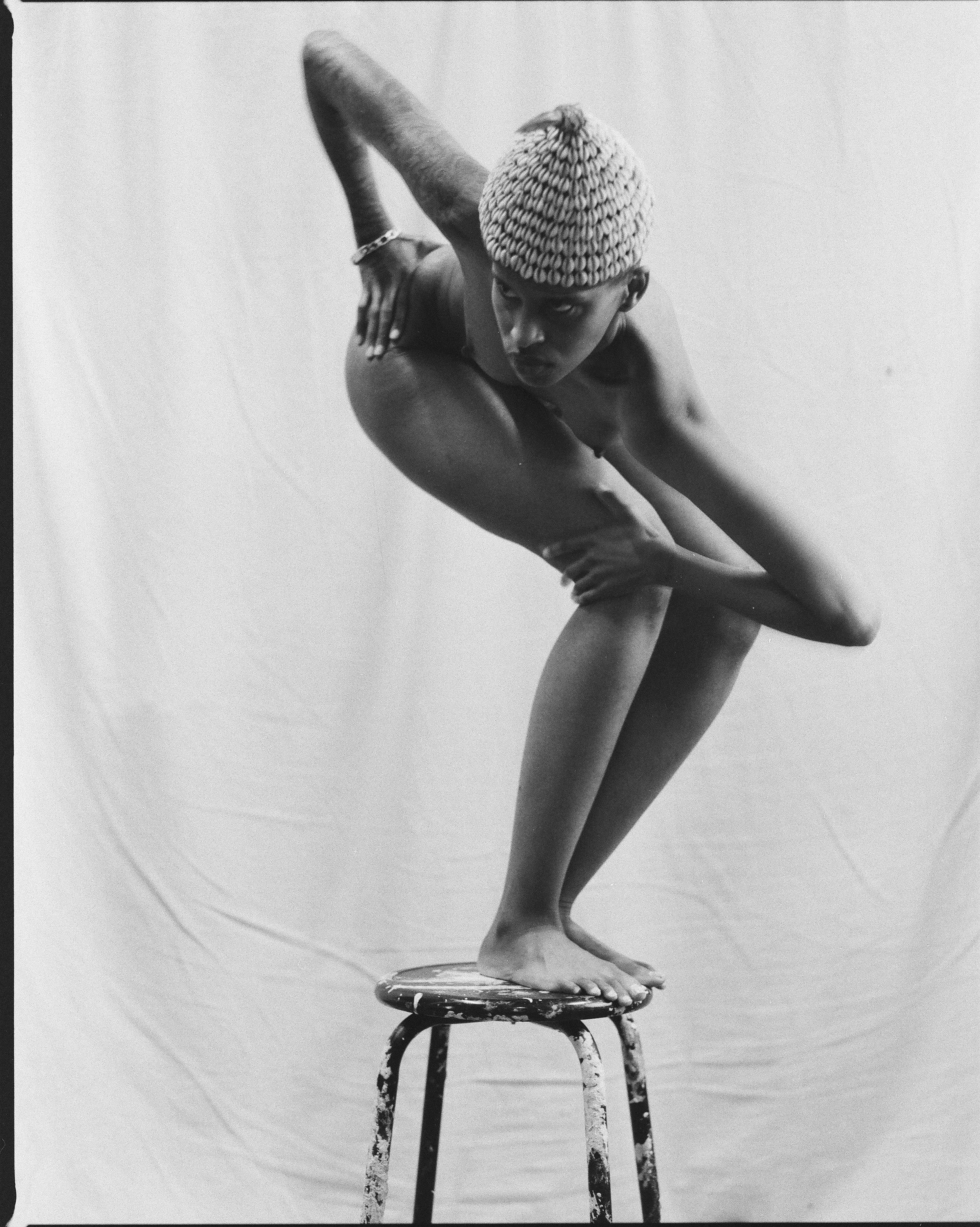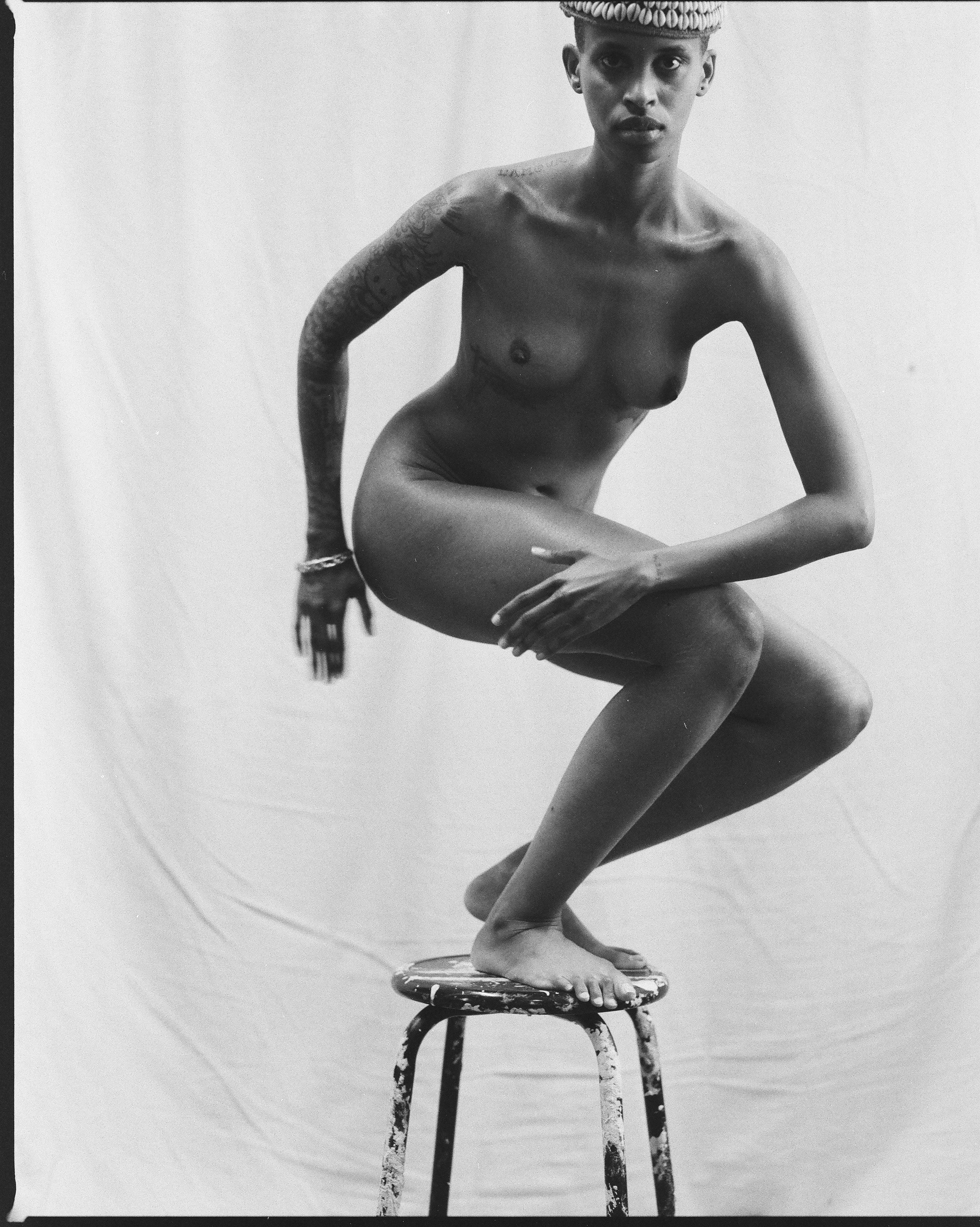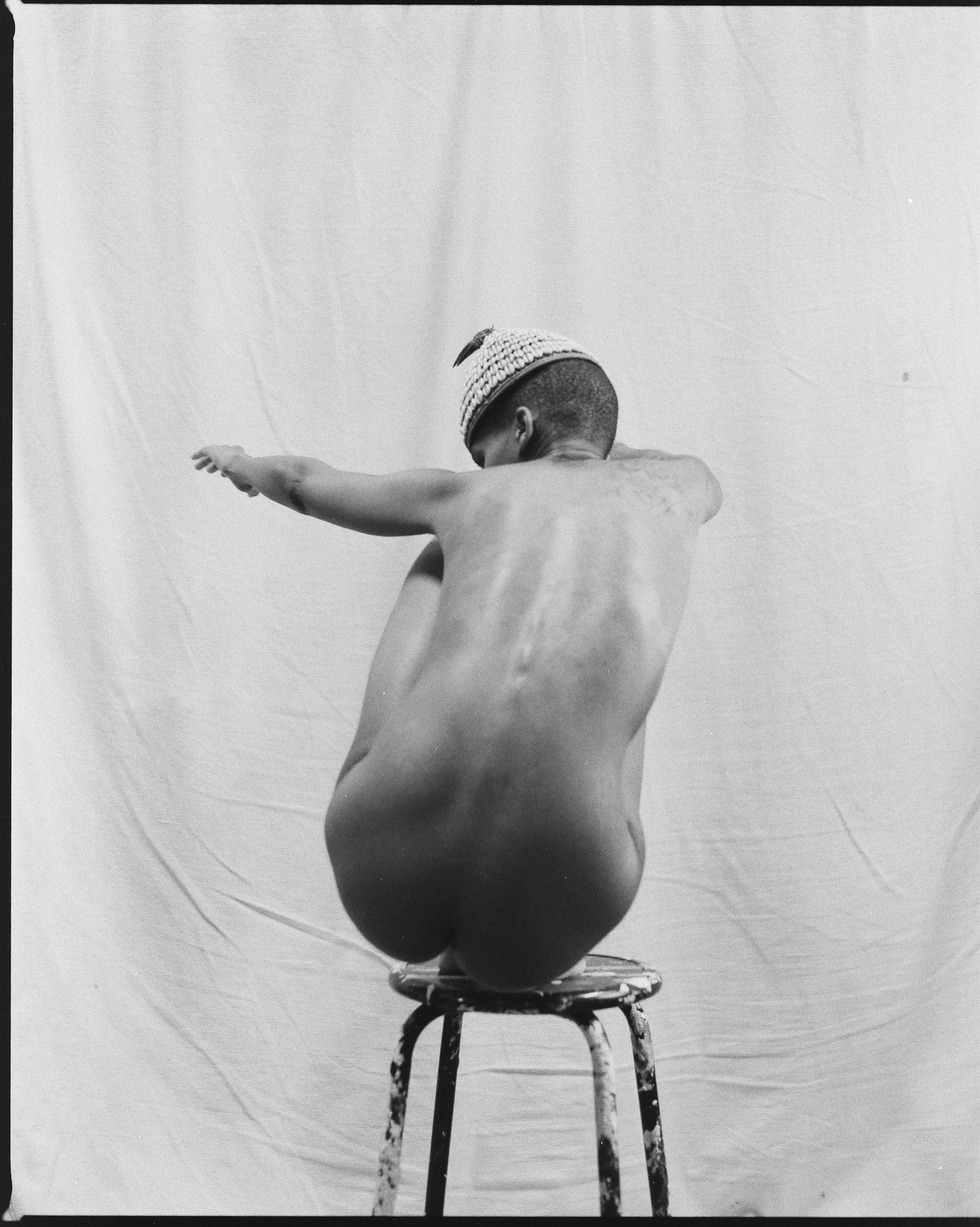This is a calling to the women.
The mothers.
The ones who shaped me before I arrived.
Whose names I don’t know—but feel in my bones.
I’m learning femininity through my spine,
my hips, my stillness.
Each gesture is memory. Each shift, a return.
I think of those who raised children while holding grief.
Who disappeared inside their own strength.
I move to feel them near. I pause to let them speak.
The stool is an altar.
The body, an offering.
The image, a trace of something older than I can name.
Femininity carries edge.
It moves through silence and weight.
This is where I meet myself—
and all the women who made me.
— Text by Nella Ngingo
"Mama" is a series of black-and-white self-portraits exploring memory, ancestry, and the embodied nature of femininity. Shot on film, the work moves away from choreography or premeditation; instead, each image emerges through feeling and intuition. Alone with a stool, a film camera, and an empty room, I allowed whatever needed to surface to come through unfiltered.
The project traces the women who shaped me, the ones I know, and the ones we lost to time. It asks how stories live inside the body, even when left unspoken. It reflects how strength can move quietly, carried in posture and stillness, and how grief and resilience can coexist without ever being acknowledged.
While Mama is technically a self-portrait, the process did not feel solitary. There was a tangible sense of dialogue across bodies and across time, a conversation with the women who came before me. Although my own figure appears in the photographs, the work holds much more than my singular presence.
In creating Mama, I made the work for the women I know and the women I don’t the mothers before me, the ones I come from. Even without knowing all their names, I feel them in my body. I was thinking about how femininity moves: how it resides in the spine and hips and the weight it carries without being apparent. The stool became an altar, the body an offering. Every movement was a conversation with memory, with survival, with the kind of strength that doesn’t shout but holds everything up. I thought about how much grief lives inside women, how much silence, how many stories are carried in gestures, in stillness, in the way you bend but don't break. I moved to remember them. I moved to meet myself, too.
The inspiration for Mama came from a dream, a calling I followed before I fully understood its meaning. Its first audience, the ancestors it honors, has already received it. This project reminded me that the body carries stories, the mind cannot always speak, and that sometimes the image knows before the artist does.
